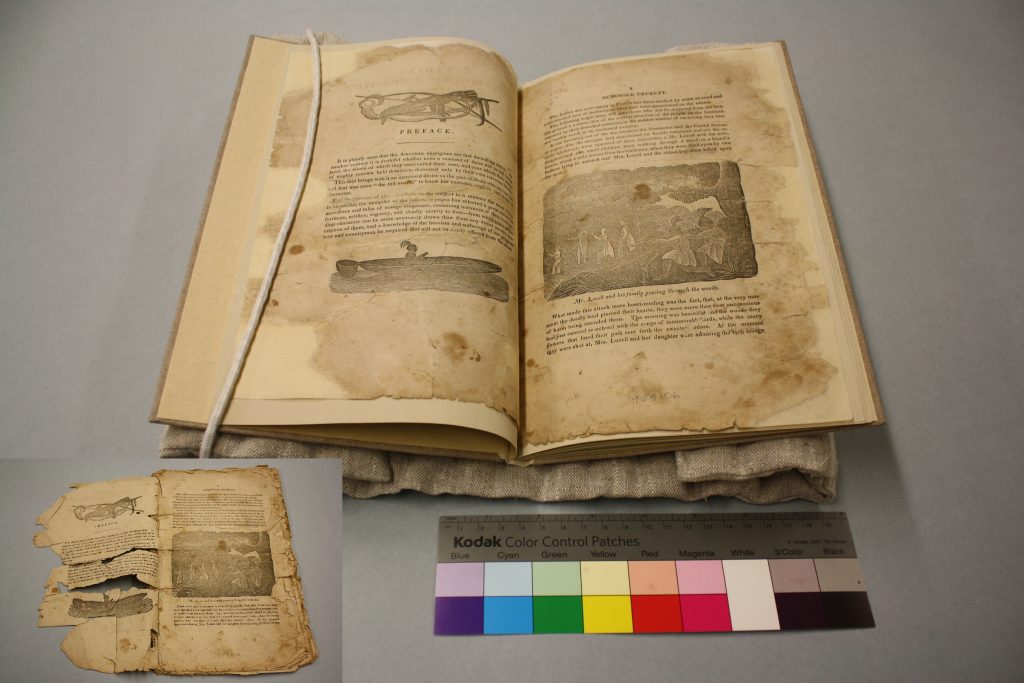A quarterly installment highlighting Library Conservation in the Brown University community, conservation news around the internet, and ways for you to connect with conservation.
Book and paper conservation at Brown
Located in the John Hay Library, Brown University Library’s conservation lab mixes historical tools such as 19th century cast iron book presses and board shears with 21st century conveniences and innovations like a variable speed control HEPA vacuum cleaner and a deionized water filtration system. This amalgam of old and new allows the conservator to address collection needs such as: repair and other physical treatments, environmental monitoring, object handling, exhibition, storage, research, and education.
In house treatment at the Hay

Before Treatment/ After Treatment
An 1841 pamphlet used in a class last fall had suffered tears, losses, and staining to the paper support since its creation, and had been over-sewn in a manner that made opening the already fragile pages even more hazardous. The pamphlet was disbound, the paper support treated and repaired, making new gatherings that were sewn through the fold and cased into a new lapped component binding.
Find conservation online and in person
This year marks the 50th anniversary of the Florence Flood; the disaster that revolutionized conservation and preservation in libraries and museums around the world. If you are attending ALA in Orlando, you will have a chance to view the new digital restoration of the rare Franco Zeffirelli film, Florence: Days of Destruction.
Just because a thing is old doesn’t mean that it is better, or right, or wasn’t created by someone who was having an off day. But the human ingenuity poured into every aspect of a book-thing is awe-inspiring, and it is at the heart of my conservation efforts. The majority of special collections holdings look pretty good considering their age and everything they have been through. Bookbinding and book conservation communities continue to explore different ways of respecting history and original forms while improving on function and considering contemporary aesthetics. This practice in itself is a continuation of the tradition of fixing, mending, and making useful again these book objects we can’t seem to live without.
Catchwords
Paul Banks‘ 10 Laws of Conservation. #1: No one can have access to a document that no longer exists. See you in September for #2 and more.
-Rachel Lapkin, Library Materials Conservator
